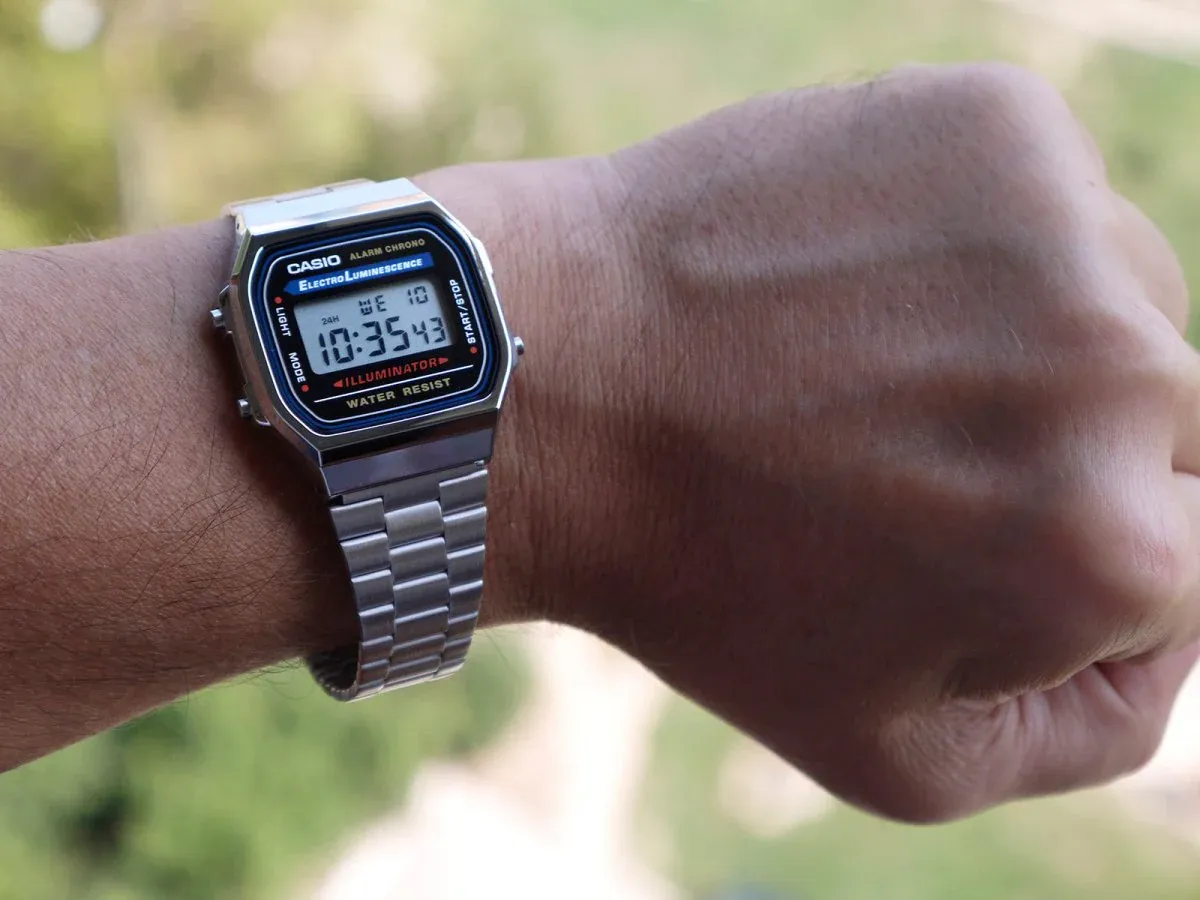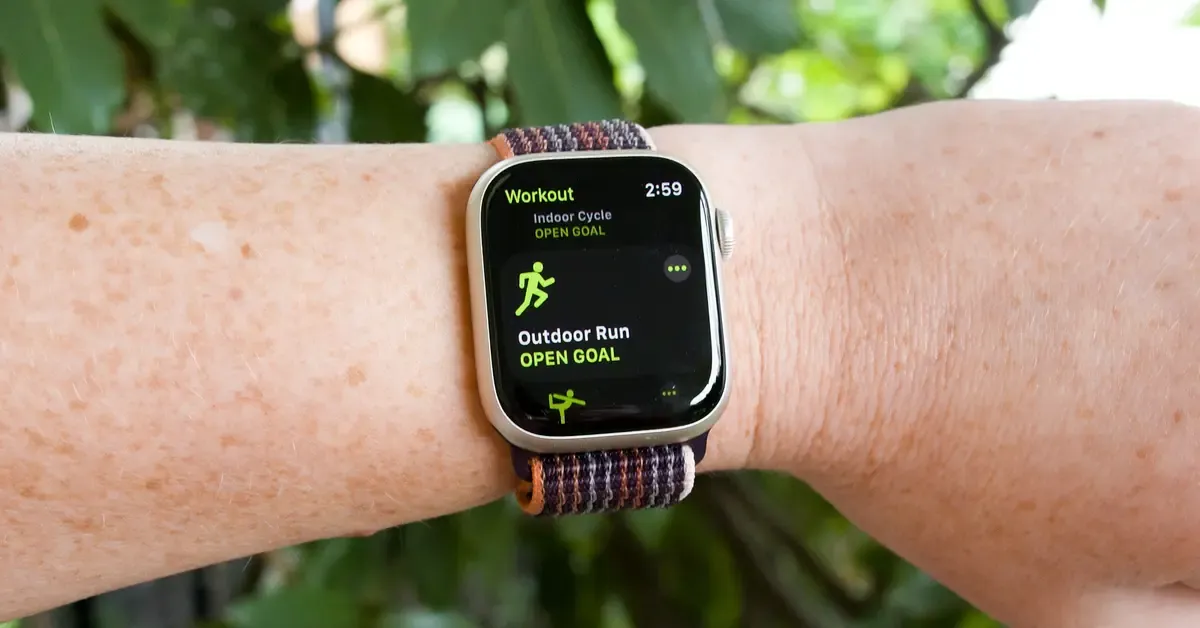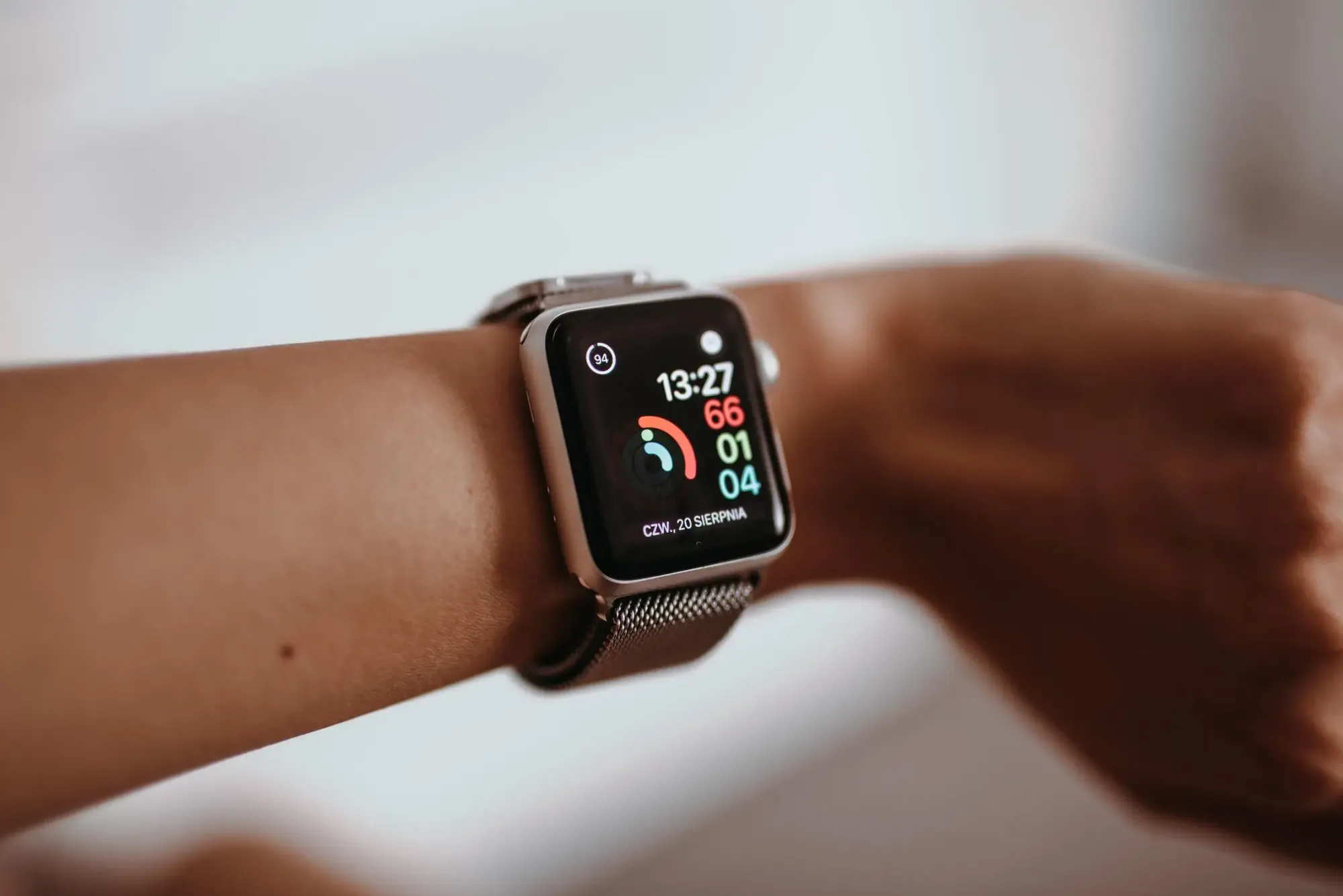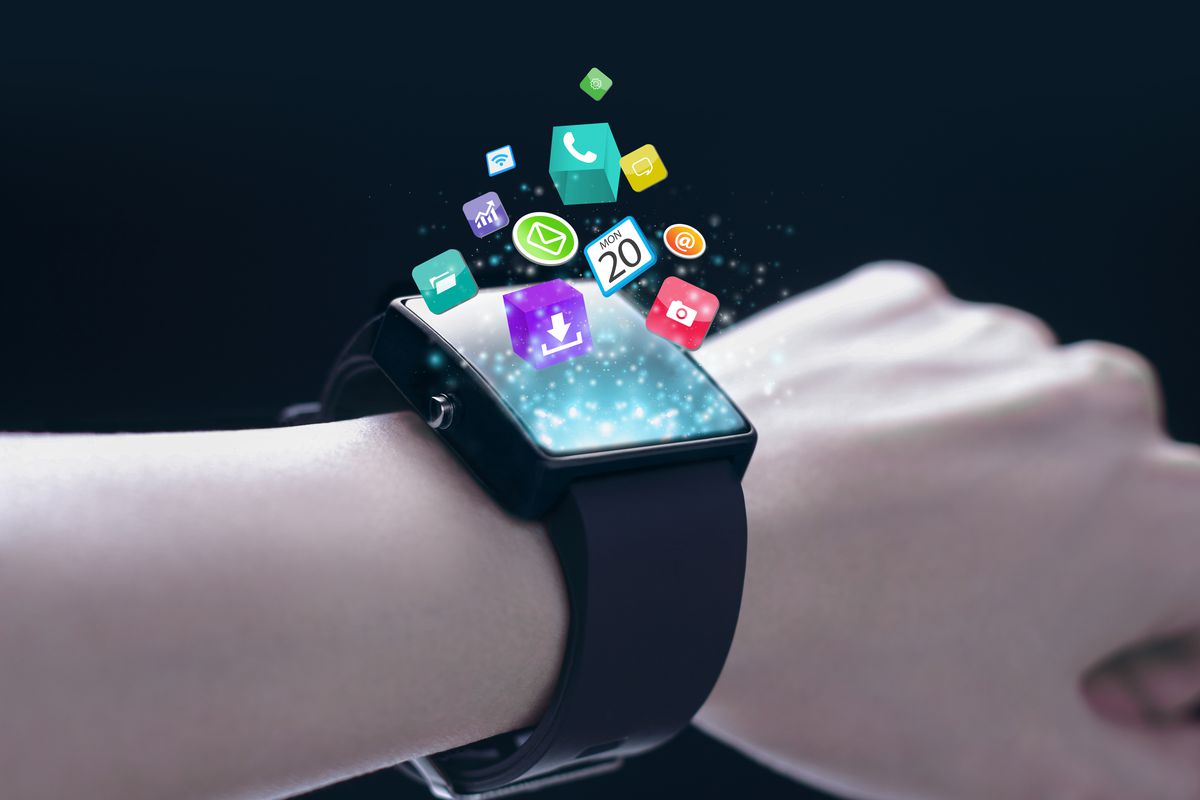A Tale of Two Timepieces: Comparing Traditional Watches and Smart Watches
Both offer unique features and cater to different needs, but which one is truly the superior timepiece?

Introduction:
In an era defined by technological advancements, the humble wristwatch has undergone a significant transformation. The rise of smartwatches has challenged the dominance of traditional analog timepieces, sparking an intriguing debate: traditional watches or smartwatches? Both offer unique features and cater to different needs, but which one is truly the superior timepiece? In this article, we embark on a journey to compare and contrast these two distinct worlds of horology, exploring their design, functionality, and the overall experience they offer.
What is a Traditional Watch?
A traditional or analog watch is a mechanical timepiece that relies on intricate mechanical movements to measure and display time. It features a dial with hour, minute, and often second hands, providing a visual representation of the passage of time. Traditional watches are known for their elegance, craftsmanship, and connection to horological traditions. They operate without the use of digital components and emphasize the artistry and precision of mechanical watchmaking. These timepieces often use premium materials and can include various complications, further enhancing their functionality and visual appeal. Wearing a traditional watch is a timeless and sophisticated statement that celebrates the art and heritage of watchmaking.

What is a Smartwatch?
A smartwatch is a technologically advanced wearable device that goes beyond the basic functions of a traditional watch. It integrates with a smartphone or other devices and offers a wide range of features and capabilities. These include receiving and responding to notifications, tracking health and fitness metrics, playing music, accessing apps, and even making contactless payments. Smartwatches usually have touchscreens for easy navigation and can be personalized with different watch faces and bands. They bring the power of digital technology to the wrist, providing convenience, connectivity, and a host of interactive functions in a compact and stylish form.

Can Smartwatches Replace Traditional Watches?
While smartwatches have gained popularity, they cannot completely replace traditional watches. Traditional watches hold a special place in the hearts of watch enthusiasts and collectors who value their craftsmanship, heritage, and timeless design. They are often regarded as status symbols and carry sentimental value as family heirlooms or cherished gifts.
Smartwatches, on the other hand, offer a range of technological features and functionalities that cater to the needs of the digital age. They provide convenient access to notifications, fitness tracking, and app integration, enhancing connectivity and productivity. However, their reliance on digital components and regular charging means they may not have the longevity and durability associated with traditional watches.
The decision between a smartwatch and a traditional watch ultimately depends on personal preferences and priorities. Some individuals may prefer the classic elegance, craftsmanship, and emotional value of a traditional watch, while others may prioritize the versatility and digital capabilities of a smartwatch. It's not a matter of one replacing the other, but rather a matter of finding the perfect balance between traditional aesthetics and modern functionality to suit individual lifestyles and preferences.
Differences between Traditional Watches and Smartwatches
In order to compare and evaluate the similarities and differences between traditional watches and smartwatches, it is essential to delve into their qualities and shortcomings. By doing so, we can gain a better understanding of the impact of smartwatches on the watch market as a whole. Through this analysis, we can draw a more accurate picture of how these two types of timepieces have shaped the industry.
Durability/Longevity:
Traditional watches excel in longevity compared to smartwatches. While smartwatches require regular charging and have a limited lifespan due to the nature of their electronic components, traditional watches can endure for generations. Whether powered by mechanical or quartz movements, traditional watches can keep accurate time for years, requiring only occasional maintenance and servicing. Their mechanical nature allows them to operate independently without the need for constant recharging or software updates.

Moreover, traditional watches often hold sentimental value and can become cherished heirlooms, passing down the stories and memories associated with them. The enduring lifespan of traditional watches adds to their appeal, making them reliable companions that can be enjoyed for a lifetime and beyond.
Accuracy:
Mechanical watches lack the precision of electronic watches. The best automatic watches can deviate a few seconds per day, while electronic watches and quartz watches offer superior accuracy.

However, traditional electronic watches, particularly modern quartz movements like the Bulova Precisionist, can match the precision of smartwatches. With deviations of around ten seconds per year, these quartz watches provide comparable performance in terms of accuracy.
Price:
Smartwatches and smart devices are typically priced in line with smartphones. In contrast, the price range of traditional watches is much broader, ranging from inexpensive options to luxury timepieces worth millions of dollars. While smartwatches often compete with lower to mid-range "fashion watches" that prioritize trendy designs over durability, traditional watches offer a wider variety of options at different price points. Mid- to high-end traditional watches, renowned for their quality and longevity, generally come with a higher price tag compared to smartwatches.

However, it's important to note that traditional watches cater to various budgets, and their cost is influenced by factors such as craftsmanship, materials, and brand reputation.
Design and Style:
Smartwatches are known for their modern and minimalist designs, often featuring large screens for user-friendly interaction. One of their standout features is the ability to download and customize interfaces, allowing users to mimic the appearance of famous timepieces and change the watch face as desired.

In contrast, traditional watches have a well-defined style that can only be altered by changing the strap. While smartwatches offer greater versatility in terms of aesthetics, traditional watches maintain their distinctive and timeless charm. However, with a smartwatch, one can effortlessly switch between different virtual watch faces, enabling the experience of wearing iconic models like the Nautilus or Daytona without the need for multiple physical timepieces.
Technology:
Smartwatches showcase the latest electronic technology, but their rapid evolution renders them quickly outdated. Traditional watchmaking, on the other hand, continues to introduce substantial innovations, not limited to electronic watches.

The discovery of new materials and processes, such as the use of silicon, has revolutionized mechanical watchmaking. For instance, Zenith's Defy Lab introduced a monocrystalline silicon oscillator that replaces multiple parts and vibrates at a higher frequency than standard mechanical watches. These ongoing advancements demonstrate that traditional watchmaking still has much to offer in terms of innovation and craftsmanship.
Fashion and Character:
Wearing a watch on the wrist is an opportunity to showcase personal style and attention to detail. It is a deliberate choice that communicates a visual message to others. Whether opting for a traditional watch or a smartwatch, the decision is subjective and open to individual preference.

The design, uniqueness, and aesthetics of each timepiece play a crucial role in the selection process. Ultimately, wearing a watch is a personal expression of pleasure and individuality, signifying our distinctive tastes and preferences in the realm of fashion and accessories.
Luxury Watchmakers Embracing Smart Technology
Luxury watchmakers are embracing smart technology, similar to the quartz crisis of the 1970s, to stay relevant and attract new collectors. Tag Heuer's Connected series combines expert watchmaking with cutting-edge technology, featuring luxurious materials and a touch screen display beneath the sapphire crystal. The Golf edition even offers 3D course rendering and distance measurements.

However, while luxury watch brands embrace smart technology, traditional mechanical watches remain timeless and cherished as heirlooms. There are situations where a smartwatch may not be suitable, such as formal events, while traditional watches are admired for their craftsmanship and design. Different watches serve different purposes, and both traditional and smartwatches have their place in the world of horology.
Should You Buy a Smartwatch?
Smartwatches are useful accessories, and many people who buy them end up happy with their purchase. Before buying one, however, it's a good idea to ask yourself what purpose it will actually serve.
Many of their functions are better performed by dedicated devices. And this makes a smartwatch good at many things but not perfect for any of them.
Conclusion:
In the tale of two timepieces, there is no clear winner. Traditional watches offer a timeless elegance and a connection to the rich heritage of watchmaking, while smartwatches embrace cutting-edge technology and connectivity. The choice between the two ultimately comes down to personal preference, lifestyle, and the desired functionalities.
For those seeking a classic and refined accessory, a traditional watch will always hold its allure. However, if you crave the integration of technology into your everyday life, a smartwatch may be the perfect companion. The beauty of this tale lies in the fact that we live in a time where we can choose from an incredible range of timepieces, each with its own story to tell. Whether you opt for tradition or innovation, both traditional watches and smartwatches continue to captivate watch enthusiasts and serve as a testament to the ever-evolving world of horology.





